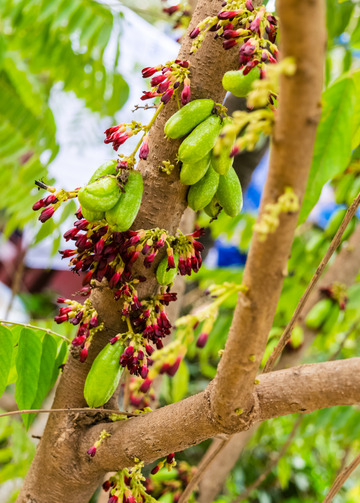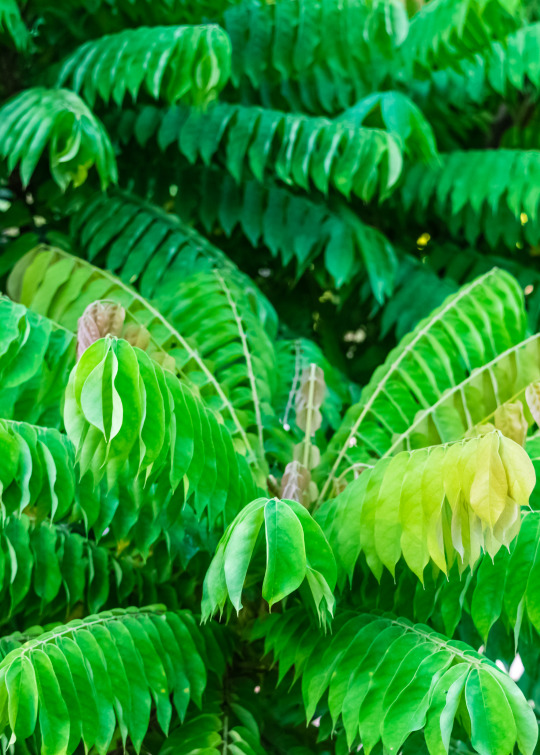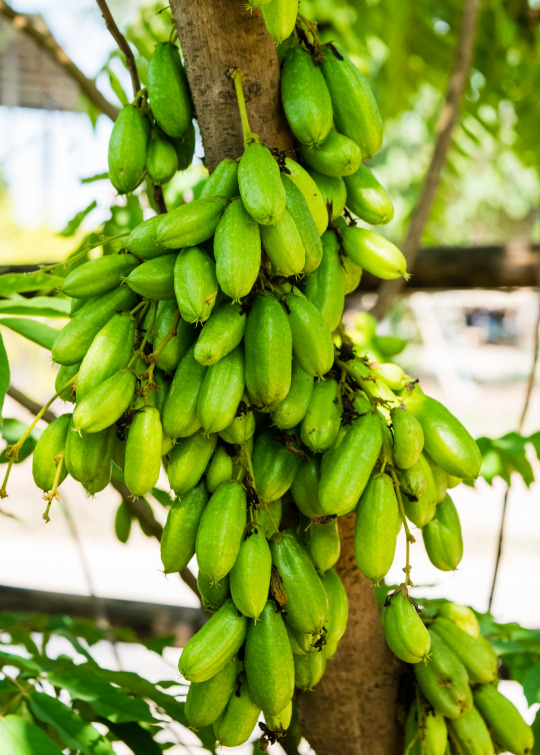#Averrhoa
Text


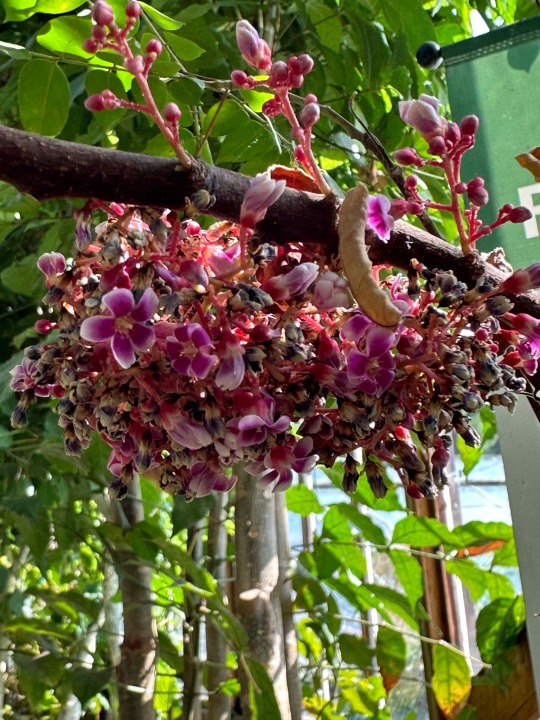
Plant of the Day
Friday 12 January 2024
In a tropical glasshouse a small tree Averrhoa bilimbi (bilimbi, cucumber tree, tree sorrel) was flowering. After the clusters of flowers finish the sour tasting, yellowish green fruit develop and are used for medicinal purposes in many tropical and subtropical countries.
Jill Raggett
#Averrhoa#bilimbi#cucumber tree#tree sorrel#plants#tropical#tropical glasshouse#horticulture#gardens#cambridge botanic garden#botanic#pink flowers#medicinal
69 notes
·
View notes
Text
Carambola or Star Fruit Illustrations
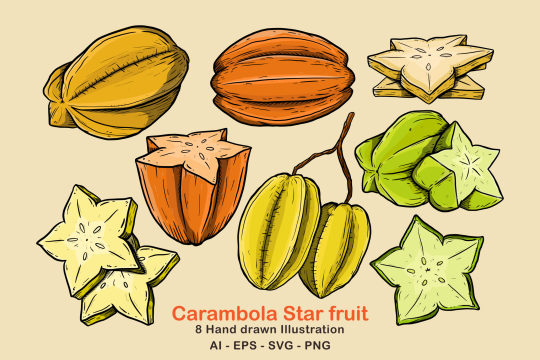
Carambola Star Fruit Illustration includes 8 elements, that are perfect for logos, branding, art prints, packaging, badges, web and social media graphics, posters, wall art, cards, surface pattern design, and more!
It’s all vector so you can easily change color or scale it to any size you need.
Files Included:
- AI
- EPS
- 8 SVG individual elements
- 8 PNG individual elements
Read the full article
#agriculture#art#averrhoa#Background#carambola#color#cut#delicious#design#dessert#diet#drawing#eat#exotic#food#fresh#freshness#fruit#green#health#healthy#icon#illustration#ingredient#isolated#juice#juicy#leaf#Natural#nature
4 notes
·
View notes
Text

Averrhoa carambola.
The Star Fruit is a remarkable thing, though it is more decorative than useful. Slices look very pretty in a fruit punch. You might have to look quite hard to see it in this picture.
0 notes
Text
Starfruit After An Abortion For Fast Recovery | Carambola
Starfruit After An Abortion For Fast Recovery | Carambola
#Starfruit #After #An #Abortion #For #Fast #Recovery | #Carambola
#starfruit,carambola,averrhoa #carambola,carambola #tree,carambola #star #fruit,growing #starfruit,starfruit #abundance,carambola
A Nutrient-Packed Fruit for Fast Recovery After an Abortion
Starfruit After An Abortion, it is crucial to prioritize your physical well-being and support your body’s healing process. One way to promote fast recovery is by incorporating nutritious foods into your diet. Among the many options, Starfruit stands out as a fruit with remarkable health benefits. This article will explore the healing…

View On WordPress
#averrhoa carambola#bell carambola#Benefits of Starfruit#carambola#Carambola Abortion For Fast Recovery#carambola benefits#carambola care#carambola fruit farming#carambola plant#carambola safe#carambola star fruit#carambola taste test#carambola toxic#carambola tree#Female Fertility#growing starfruit#how to cut carambola fruit#how to eat carambola#How to Make Starfruit Juice?#Is it safe#Is it safe to consume Starfruit#Is Starfruit Dangerous to Eat?#Is Starfruit mixed with milk?#Nutritional Profile of Starfruit#preparar carambola#starfruit#starfruit abundance#Starfruit After An Abortion#starfruit care#starfruit florida
0 notes
Text
Sargassum, a type of brown macroalgae, has been inundating beaches across the Caribbean since 2011. It comes from the Sargasso Sea in the Atlantic Ocean.
The seaweed has harmed Caribbean economies and human health, making it a national emergency in some island-nations.
Over the past decade, entrepreneurs and scientists have found ways to turn sargassum into nutrient-rich biofertilizers, biostimulants and other organic products to boost agricultural yields while cutting back on chemicals.
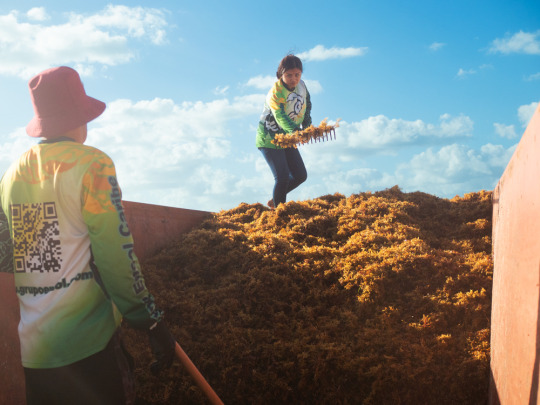

Small-scale industry or regional boon?
While the industry remains a small club, the issue isn’t going away. Mexico uses sargassum for a long list of products, such as eco-concrete and biogas. And in Miami, a recent initiative offered cash prizes for innovative uses of sargassum as a mitigation measure, including Carbonwave and a St. Lucian biofertilizer company called Algas Organics. As the industry grows, Morrison anticipated that “ownership” over sargassum, depending on its location in the water, could become a point of contention.
For now, the agroecological benefits of using sargassum to help produce more nutritious food are what keep Forte motivated at Red Diamond.
As a child, his grandmother’s garden was paradise. He climbed mango trees, plucked ripe bananas off the stems and stole the occasional “finger fruit,” a local term for carambola (star fruit, Averrhoa carambola), as an afternoon snack. Forte watched as she recycled plant matter back into the soil, allowing the crops to proliferate year-round.
Looking back, Forte realized his grandmother was practicing what is now called permaculture, a style of agroecology that prioritizes recycling nutrients in a zero-waste manner.
“Nature is something that is ever-changing,” Forte said. “We have to be as flexible and as adaptable as nature to be able to work with it effectively.”
#solarpunk#solarpunk business#solarpunk business models#solar punk#reculture#caribbean#sargassum#seaweed#blue economy#nature
16 notes
·
View notes
Photo
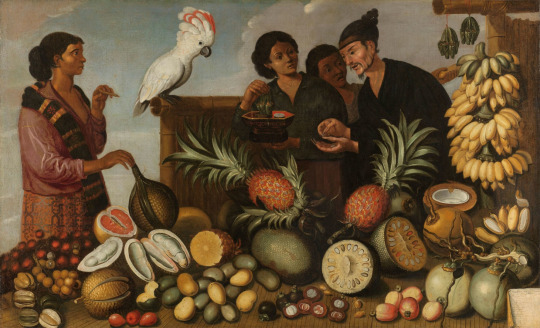
A Market Stall in Batavia, Andries Beeckman (attributed to), Albert Eckhout (rejected attribution), c. 1640 - c. 1666
The Dutch and Malay inscriptions on the piece of paper in the lower right corner identify this as a Dutch painting of subjects studied on the spot. Most of the fruit varieties are found only in Indonesia, the former Dutch East Indies, and were not exported to Europe at the time. The combination of figures from different countries suggests that the setting is most probably the very cosmopolitan Batavia, modern-day Jakarta.8 A Chinese merchant, recognizable as such from his distinctive goatee, moustache and remarkably long fingernails, is counting coins in a fruit stall set off with bamboo partitions. Standing on the left is a woman wearing a typically Javanese sarong and kebaya and holding a small cigar in one hand while placing a durian upright with the other. A second Javanese woman in the middle is lifting a small bundle of leaf wrappers out of a small Japanese lacquered casket, probably betel leaves. A boy behind her is picking a banana from the bunch hanging on the right. A striking salmon-crested cockatoo (Cacatua moluccensis) is perched on the bamboo screen at the back.
Andries Beeckman went to great lengths to depict the huge diversity of tropical fruit as faithfully as possible, but he was clearly not a professional still-life painter. The different varieties are easily distinguished, but their textures are not convincing. Laid out on the table – some with numbers matching the list on the piece of paper (the latter are given between brackets below) – are, on the far left, from top to bottom, rambutans (Nephelium lappaceum, no. 1), langsats (Lansium domesticum, no. 3) and starfruit (Averrhoa carambola, no. 2). Beside them are a partly cut pomelo (Citrus maxima, no. 4) and durians, one of them sliced (Durio, no. 5). The three small pieces of red fruit at bottom left are water or Malay apples (Syzygium aqueum or Syzygium malaccense, no. 6) or Java apples (Syzygium samarangense), and lying to their right are mangoes (Mangifera indica, no. 7) and pineapples (Ananas comosus, no. 8). Below the two pineapples in the centre are jackfruit, one halved (Artocarpus Heteropyllus, no. 9) and several small mangosteens, some opened (Garcinia mangostana, no. 10). On the right are bananas (no. 11), five coconuts and a halved one (Cocos nucifera), and at the very front cashew apples (Anacardium occidentale). The fruit cut in two in the Japanese casket is probably a sort of lime called a Calamondin orange (Citrofortunella microcarpa).
The Rijksmuseum painting is a reduced version of a canvas from an anonymous series of scenes of foreign peoples and produce that decorated the walls of Schloss Pretzsch an der Elbe in Saxony until 1828 (fig. a).9 In the nineteenth century they were removed, first to Berlin and then to Schloss Schwedt an der Oder in Brandenburg.10 They were seen there in the 1930s by Thomsen, who rather hesitantly attributed them to Albert Eckhout and dated them around the middle of the seventeenth century.11 Schwedt was completely destroyed in the closing days of the Second World War, and all that is left of the works of art are pre-war black-and-white photographs making it clear that the attribution to Eckhout is untenable.12
The connection with the canvas from Schloss Pretzsch also led to this Market Stall in Batavia being wrongly attributed to Eckhout or his circle in the past.13 It is woodenly executed, compositionally clumsy, and is not of the kind of Brazilian subject for which Eckhout is known. Minor differences between the two paintings show that they were not copied after each other but seem to share the same or a similar source. The way in which the fruit and cockatoo are depicted displays a clear resemblance to the only known still life by Andries Beeckman (fig. b), and, interestingly, one of the scenes from the series in Pretzsch castle was definitely based on watercolours by him,14 so the present canvas could also be by Beeckman or someone from his circle.
Very little is known about the picture’s provenance, although there are a few early records of an Indonesian fruit market, and since A Market Stall in Batavia is the only surviving work of that nature there is a great temptation to associate it with those early sources. There is, however, nothing that can be said for certain. Around 1660 Jan Vos wrote an ode about paintings in the collection of Joan Huydecooper, among them an ‘East Indies fruit market’: ‘Who has driven me from the north to the east? / I find myself in the market of the East Indies coast. / Here nature displays her fruit as food for life. / The sight makes my mouth desire the beautiful harvest, / Thus is my stomach now sorely overburdened. / Greedy eyes are not soon satiated’.15 It may well be that the poet was referring to the Rijksmuseum canvas.16 There is a second mention of an ‘East Indies fruit market’ a little later in the collection of burgomaster Mattheus van den Broucke of Dordrecht.17 It is far from obvious that it refers to this Market Stall in Batavia. His picture was one of a series of which the others were described as ‘One ditto, with East Indies animals and fruit’, ‘One ditto, being East Indies lodgings, ‘One ditto’, ‘Three ditto, East Indies women’ and ‘A Moorish woman’.18 It is very possible that the Rijksmuseum painting was also part of a larger ensemble of that kind.
Erlend de Groot, 2022
#hanfu#indonesia#art#sarong#Andries Beeckman#kebaya#懒收巾#jingguan#headwear#dutch painting#A Market Stall in Batavia
74 notes
·
View notes
Text
Pros of being a Hoennian expat: I can tell Paldeans who are planning their vacation to Not Go To Hoenn, Thanks.
Cons of being a Hoennian expat: I miss my wives (Averrhoa Carambola trees)
2 notes
·
View notes
Photo
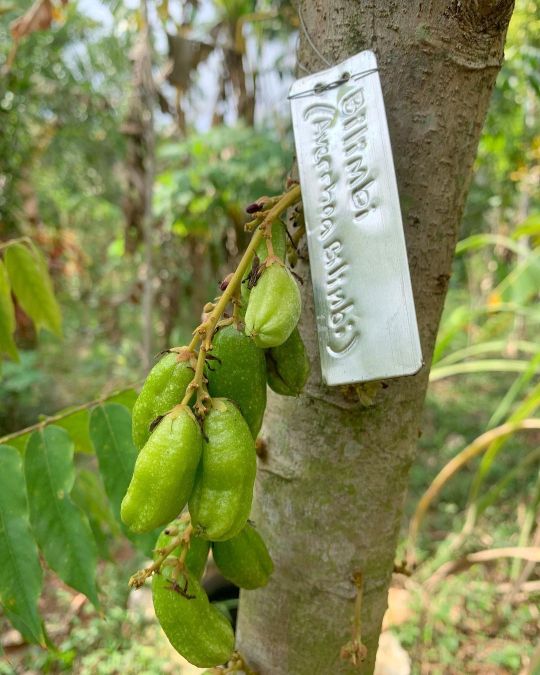
🌳 This season, our Bilimbi tree (Averrhoa bilimbi) is flourishing like never before, and I can't wait for this first major harvest! If you haven't heard of Bilimbi, it's a close cousin to the star fruit and has its origins in Southeast Asia. Somehow, this tropical gem made its way to Haiti, and I'm grateful it did! 🌏🇭🇹 The Bilimbi fruit is not just pleasing to the eye with its vibrant green color; it's also incredibly versatile in the kitchen. The tangy flavor makes it perfect for adding zing to salads, pickles, and chutneys, while its high acidity levels make it an excellent natural alternative to vinegar! 🥗🥒 But wait, there's more! Bilimbi fruit has been used in traditional medicine to treat various ailments, from relieving coughs and colds to reducing inflammation and even controlling blood sugar levels. 🌡️💊 I'm excited to share this amazing fruit with you all, and I'll be posting a fruit tasting soon enough. Stay tuned! 💚🌳 . . 🌳 Sezon sa a, pye bwa blenblen nou an (Averrhoa bilimbi) ap donnen tèt anba, e mwen pa ka tann pou premye gwo rekòlt sa a! Si ou pa janm tande pale de blenblen, li se yon kouzen pwòch karambòl la epi li gen orijin li nan Azi Sidès. Yon jan kanmenm, bijou twopikal sa a te fè wout li ann Ayiti, e mwen kontan ke li la! 🌏🇭🇹 Fwi blenblen a se pa sèlman pou plezi je ak bèl koulè vèt vibran li yo; li la tou ekstrèmman adaptab nan kwizin nan. Ti gou si li an fè li pafè pou ajoute zing nan salad, pikliz, ak sauce pimant, pandan nivo asidite segondè l yo fè l yon bon altènativ natirèl pou vinèg! 🥗🥒 Men, tann, gen plis! Blenblen yo te itilize nan medikaman tradisyonèl pou trete divès maladi, soti nan soulaje tous ak rim jiska diminye anflamasyon e menm kontwole nivo sik nan san. 🌡️💊 Mwen kontan pataje fwi etonan sa a avèk nou tout, epi mwen pral afiche yon video degustasyon fwi sa a byento. Rete branche! 💚🌳 . . #GrownInHaiti #BilimbiTree #AverrhoaBilimbi #Blenblen #TropicalTangyTreats #DiscoverBilimbi #TropicalFruits #TreeCucumber https://www.instagram.com/p/CqL2nm0u_CR/?igshid=NGJjMDIxMWI=
#growninhaiti#bilimbitree#averrhoabilimbi#blenblen#tropicaltangytreats#discoverbilimbi#tropicalfruits#treecucumber
7 notes
·
View notes
Photo
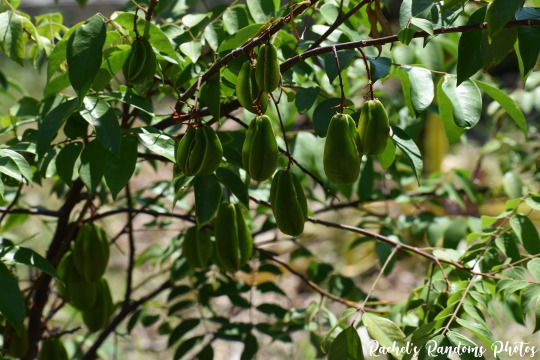
Growing Star Fruit (Averrhoa carambola)
Taken at The Yoga Garden in Melbourne, FL
#star fruit#starfruit#fruit#food#garden#community garden#nature photography#photography#florida#florida photographer#Florida Photography#the yoga garden#yoga garden#nikon photography#nikond3500#carambola#plant#plants#plant photography
3 notes
·
View notes
Note
🦖 Favorite dinosaur
🐾 Favorite cryptid
🌳 Favorite tree
🍟 Favorite potato form
📚 Favorite book
🦖 I wasn't sure how to answer this at first because all dinosaurs are awesome. But then, I remembered how awed I was with Spinosaurus when it was brought to my attention via Jurassic Park III. Then, the new papers came out in 2020-2021 about whether or not Spinosaurus is a semiaquatic creature like the crocodilians. Spinosaurus is fascinating.
youtube
🐾 If I had to choose, it would be the Fresno nightcrawler. These things are spooky and yet cute somehow.
youtube
🌳 This was a tough one because several kinds of trees have caught my attention throughout my life. But I'm choosing kamias because I have fond childhood memories with it. Averrhoa bilimbi or kamias has very sour fruits that grow along its trunk. It's impossible to keep a straight face when you eat it fresh.

🍟 I also had to think about this because I like potato dishes a lot. But one dish that stands out to me is the Spanish omelet, also known as the Spanish tortilla or tortilla de patatas:
youtube
📚 This was a tough one. Ultimately, my favorite is Reader's Digest's Almanac of the Uncanny. I read it in high school, but I found a pre-loved copy, which I bought from an online store.

2 notes
·
View notes
Text
Makhana is Hot or Cold For Body?
Makhana or Fox Nut is a well known ancient food item that is used to improve the health and wellness. Makhana is Healthy, Hot or Cold For Body, High In Protein and Expensive
Makhana is a seasonal winter delicacy available during the winter season. It is a whole food and is loaded with nutrients, minerals and vitamins that prevent colds and flus from attacking your body. It keeps metabolism of your body high resulting in lean muscle.
Our Makhana is a raw, organic and natural product. This is the original, unprocessed and unpeeled makhana that preserves natural nutrients such as antioxidants. Eat this makhana any time of the day!
For more information: Makhana is Hot or Cold For Body? — FoodNutra
What is Makhana?
Makhana is rich in nutrients. It contains iron, potassium, protein and carbohydrates. Makhana has a low glycemic index and does not contain sugar or starch. It is very rich in dietary fiber that keeps you full for a long time.
Makhana is a dried fruit, which grows in clusters on water plants and has a similar look as of badam. Makhana gives you great strength, makes you smarter and helps to control uric acid and sugar levels.
Makhana, also known as fox nuts, is a snack that is made from the seeds of Averrhoa carambola. The fruits have a thin orange skin and white flesh. They have an excellent nutrition content with very little sugar and fat.
Raw or dried makhana is a type of delicious, nutritious nuts. Makhana is also known as sesame seeds or foxnuts.
Makhana or Lotus Seeds are the most delicious and nutritious food. It is highly nutritious, tasty and healthy. Lotus seeds contain several minerals and vitamins like Vitamin A, B1, B2, B6, E, magnesium, phosphorus etc. It contains high fibre content along with protein and carbohydrates.
Makhana is a small, pyramid-like seeds, which come from the Plantago ovata plant. It can be found in the Himalayan areas of India, Nepal and Pakistan. The sweet black variety has been popular for thousands of years and is famous for its health benefits and delightful taste.
Benefits of Makhana
Save money and time with makhana. The dried nuts are naturally healthy and known for their numerous health benefits
Makhana is a delicious, healthy and nutritious snack. It is rich in protein, iron and other essential nutrients. Makhana can be a great source of energy for those people who work hard physically throughout the day.
It is a great source of fiber and can protect against heart disease, diabetes and digestive problems. Makhana is also effective in weight loss because it contains very little fat and has zero cholesterol.
Makhana, also known as edible seeds, is a very popular snack in most parts of India. Makhana is rich in fibre and many essential vitamins, minerals and nutrients. One of the best natural sources of magnesium, makhana contains high levels of folic acid and other B vitamins (B1 and B2) which are very important for healthy functioning brain cells.
1. Boosts Immune System: Makhana or Fox Nuts, is a rich source of Vitamin-C. It acts as an antioxidant and boosts the immune system. 2. Prevents Cancer and Diabetes: It’s also found to prevent certain types of cancers such as colon, breast etc, in addition to reducing the risk of diabetes. 3. Improves Heart Health: The unsaturated fatty acids present in makhana are known to reduce cholesterol absorption while preventing the development of plaque in arteries.
It is high in fiber and has a low glycemic index. It helps reduce blood sugar levels and cholesterol.
Dry fruits makhana is good or bad
Dry fruits makhana is good to eat as it is rich in many nutrients and minerals.
Dry fruits makhana is good for health but only if it doesn’t contain sugar.
Dry fruits makhana is good or bad? It all depends on how much you consume. Dry fruits are high in sugar, but mixed with a few nuts and seeds, it is better to have as part of your diet especially if you’re an active person.
Dry fruits makhana is very delicious and healthy food. Dry fruits makhana are rich in iron and antioxidants, which help regulate blood pressure and boost immunity. Dried fruits are rich in natural sugar content and possess good quality of fibre.
Dry fruit makhana is good as it has got a lots of benefits and no side effects. And it’s also one of the most nutritious, naturally sweet, rich and cost-effective food that can help you keep your body healthy. You can eat the dry fruits makhana variety at any time of the day!
This is the small round, sweet and crunchy seed of an aquatic moassifrous plant called psyllium. These seeds are also known as ‘Indian carrots’ or ‘Akuza’.

Makhana is Low in Carbs
Makhana is Low in Carbs, Good for Diabetics and it is very beneficial in lowering the risk of heart disease and stroke.
Makhana is Low in Carbs and very healthy for the body. It’s the best Snacks for Diabetics and for your kids.
Makhana is a healthy snack which comes in various flavors to satisfy your taste buds. It is low in carbs, high in fiber and rich in nutrients.
The perfect treat for your evening, the makhana is a great low-carbohydrate and zero cholesterol snack.
Two of the healthiest ingredients in one delicious snack. Makhana — Low Carb Low Fat High Fiber. This snack will keep you full for hours and also is Medically proven to help weight loss!
A pack of Makhana (dry fruit) is a great addition to any health conscious person’s menu. Makhana is low in carbs and the fiber content helps you feel full for long. Add them to your salads, vegetables, chaats or even use them as a garnish over your curries or soups.
Makhana Contains Proteins
Makhana is a healthy snack and it contains proteins in them which keeps your body strong.
Makhana contains proteins, low in fat. Makhana is white in colour and has no side effects. Makhana contains protein, carbohydrates, vitamins and minerals which makes it beneficial for children of all ages
Makhana contains protein, fiber, iron and vitamins. It is sweet in taste, used as a snack in various cuisines
Makhana is a natural source of proteins and contains 20–25 % protein, 90 % carbohydrates and zinc, sodium, iron and calcium in acceptable quantities. Makhana is rich in fibre and so it helps suppress the appetite.
Makhana or lotus seeds are rich in protein, carbohydrate and fat. They also contain minerals like calcium, magnesium, phosphorus and iron.
Makhana is a good source of protein, fiber and minerals. It is rich in polyunsaturated fats which help lower bad cholesterol levels in the body. The presence of calcium and potassium helps keep bones strong while magnesium is required by the body to maintain heart health and also boost metabolism by increasing the flow of blood to other parts of your body especially muscles.
For more information: Makhana is Hot or Cold For Body? — FoodNutra
0 notes
Link
0 notes
Text
Exploring the Miraculous World of Starfruit
Starfruit, commonly known as carambola, is a unique and exotic fruit that has piqued the interest and taste buds of food connoisseurs all over the world. Farzana Foodstuff Trading Company UAE provides fresh and quality starfruit to you. Starfruit, with its distinctive star-like form and sweet-tangy flavour, is not only a tasty addition to your fruit basket, but also a treasure mine of health benefits. In this article, we'll look into starfruit in greater detail, including its history, nutritional worth, and inventive uses.
A Brief Overview of the Starfruit
Starfruit, scientifically known as Averrhoa carambola, originates originally from Southeast Asia but is currently produced in tropical locations all over the world. The star-shaped cross-section of starfruit, which varies from three to five ridges depending on the type, is what makes it so fascinating. Each ridge produces a naturally attractive slice.
Vitamin C: Starfruit is high in vitamin C, a powerful antioxidant that boosts the immune system and promotes healthy skin.
Fibre: It's high in dietary fibre, which aids digestion, prevents constipation, and benefits in weight maintenance.
Low in Calories: Because starfruit is low in calories, it is a guilt-free snack option for dieters.
Essential Minerals: It contains minerals such as potassium, which helps control blood pressure, as well as trace levels of iron and calcium.
Hydrated: Starfruit's high water content can help keep you hydrated, especially in hot conditions.
Creative ways to enjoy Starfruit:
Fresh Slices: The most straightforward method to enjoy starfruit is to cut it into thin, star-shaped slices. Take advantage of its natural sweetness and juicy texture.
Fruit Salad: Serve starfruit slices alongside pineapple, mango, and papaya in a tropical fruit salad.
Smoothie with Starfruit: Combine starfruit, yoghurt, banana, and honey for a pleasant and nutritious smoothie.
Dessert Garnish: Starfruit can be used as an eye-catching garnish for sweets such as cakes, tarts, or puddings.
If you haven't tried starfruit yet, you should. It has a fantastic form and flavour. It not only adds an exotic flair to your meal, but it also has a number of health benefits that make it an excellent choice for people trying to enhance their diet. So, the next time you see this brilliant fruit at your local store, grab some and give it a try. Your taste buds and your health will both thank you!
#Fresh Vegetables Suppliers Dubai#Foodstuff Trading Company UAE#Foodstuff Trading Company Dubai#Fruit company in Dubai#Re-export fruits & vegetables from UAE#fruits & vegetable food service supplier#fruits & vegetables exporter in uae#vegetables wholesale in the uae#fruits wholesaler in the uae#fruits & vegetables importer in uae
0 notes
Text

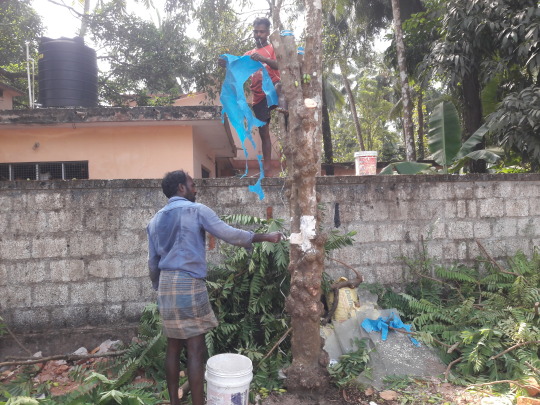



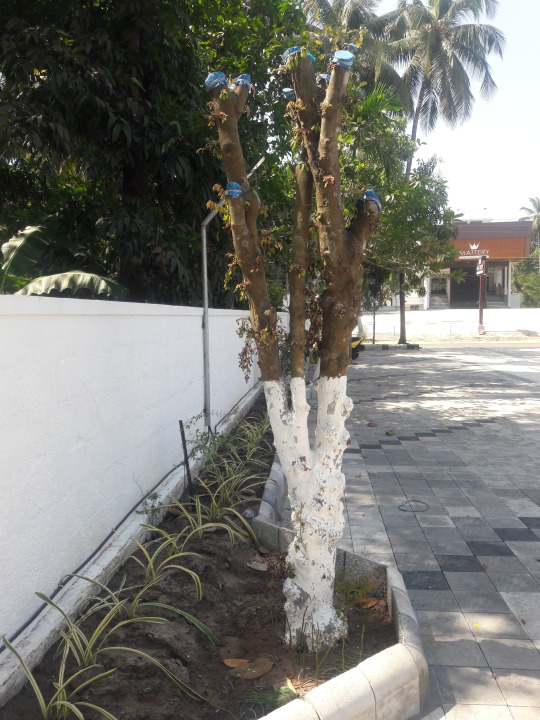
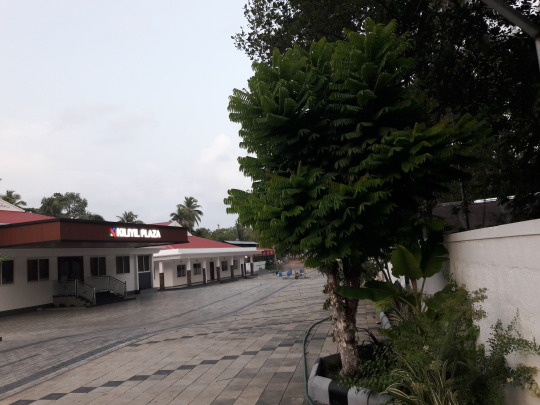

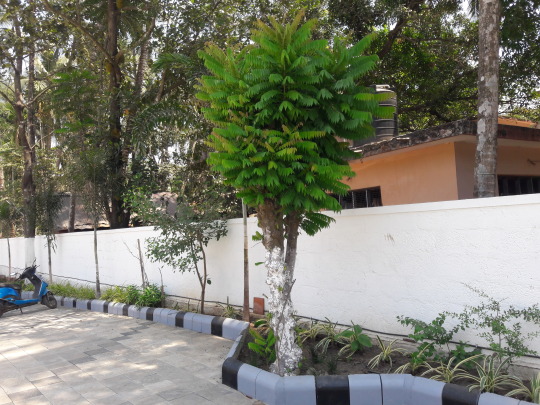


മരങ്ങളിലെ പുനർ യൗവന പ്രക്രിയ / Rejuvenation Therapy / Rejuvenation Technology in Bilimbi Trees in Malappuram Kerala India
മരങ്ങളിലെ പുനർ യൗവന പ്രക്രിയയ്ക്ക് ശേഷം വളർന്ന് വരുന്ന ഒരു ഇരുമ്പാമ്പുളി മരം.
ഇരുമ്പൻപുളി, ഇലുമ്പി, ഓർക്കാപ്പുളി, പിലിമ്പി, പുളിഞ്ചിയ്ക്ക, ചെമ്മീൻപുളി, ചിലുമ്പിപ്പുളി, ചിലുമ്പിയ്ക്ക, കാച്ചിപ്പുളി തുടങ്ങി പേരുകളിലും അറിയപ്പെടുന്നു.
Bilimbi tree / Cucumber tree Botanical Name: Averrhoa bilimbi
Family: Oxalidaceae
Propagation: Seeds, Cuttings, Air layering
ഫല വൃക്ഷങ്ങൾക്ക് നഷ്ടമായ ശേഷിയും കായ് ഫലവും തിരികെ ലഭിക്കുവാനുള്ള ഒരു തരം ചെറുപ്പമാക്കൽ പ്രക്രിയയാണ് മരങ്ങളിലെ പുനർ യൗവന പ്രക്രിയ. (Rejuvenation Therapy / Rejuvenation Technology).
തെങ്ങ്, കവുങ്ങ് പോലുള്ള പന വർഗ്ഗ മരങ്ങൾ ഒഴിച്ച് മിക്ക മരങ്ങളിലും ഈ പ്രക്രിയ ചെയ്യാവുന്നതാണ്. മരങ്ങളിൽ കാണുന്ന പരാദ സസ്യങ്ങളായ ഇത്തിൾക്കണ്ണി, പന്നൽ കൂടാതെ മരവാഴ, മുതലായവയും, കേടുപാടുകൾ വന്നതും, രോഗ ബാധിതമായതും, പ്രായാധിക്യം വന്ന കൊമ്പുകളും, വെട്ടിമാറ്റുമ്പോൾ ഒഴിവായി പോകുന്നു. മരങ്ങളുടെ വലിപ്പ കൂടുതൽ കൊണ്ട് വിളവ് (ആദായം) എടുക്കാനുള്ള ബുദ്ധിമുട്ടുകൾ പരിഹരിക്കപ്പെടുന്നു.
ഈ പ്രക്രിയയിൽ മരത്തിന്റെ വലിപ്പമനുസരിച്ച് വിറക് വലിയ നേട്ടമാകുന്നു. മാവ്, പറങ്കി മാവ്, ഞാവൽ, നെല്ലി, അരിനെല്ലി, പ്ലാവ്, കടപ്ലാവ്, ആഞ്ഞിലി, സപ്പോട്ട, ചാമ്പ, പേര, ആത്തച്ചക്ക, ചെറുനാരകം, ഇലവംഗം, വെണ്ണപ്പഴം (അവക്കാഡോ), കൊക്കോ, സർവസുഗന്ധി, മുരിങ്ങ, മുട്ടപ്പഴം, കാരമ്പോള, കുടംപുളി, ലൂബി, കറി വേപ്പ്, ജാതി, ഇലഞ്ഞി, ആര്യവേപ്പ്, ഉങ്ങ്, അശോകം തുടങ്ങി ഒരുപാട് ഫല വൃക്ഷങ്ങളിലും, അലങ്കാര വൃക്ഷങ്ങളിലും, ഔഷധ സസ്യങ്ങളിലും ‘’മരങ്ങൾ പുനർ യൗവന പ്രക്രിയ’’ ചെയ്യാവുന്നതാണ്.
Nellickal nursery® is an Agricultural best plant nursery enterprise established in 1999 on December 01 on the steps of Veliyancode Schoolpadi in Ponnani Taluk, Malappuram District Kerala India. Plant Nursery Founder Environmentalist Anish nellickal® provides the No:1 service. Fruit Garden setting, Butterfly Gardening and Butterflies Larval Host plants and Nectar plants sale, Rejuvenation Therapy in Trees (Rejuvenation Technology in Trees), Pruning and Hard Pruning services in fruit pants, Tree Transplantation (Tree Relocation/Tree Burlapping services/Tree Shifting Technology/Tree Moving method /Trees Translocation), Miyawaki Foresting (Crowd foresting), Man-made Foresting, Landscaping Gardening, Lawn Grass setting and Lawn Mowing Maintenance Service, Indoor Gardening, Medicinal Gardening, Bonsai Making, Water Bonsai, Bonsai Training, Vertical Gardening, Kokedama Gardening, Birth Star plant setting, Zodiac tree set, Vegetative Plant propagation training, Agriculture consultancy, top Plant nursery set, Nursery management, service in all over Kerala and some another state.
Nellickal nursery® plant nursery Thiruvananthapuram, Pathanamthitta, Kollam, Alappuzha, Idukki, Kottayam, Ernakulam, Thrissur, Palakkad, Malappuram, Kozhikode, Kannur, Wayanad, Kasaragod on services provided.
Two Nature clubs are operating on this nursery campus. “Plant Village Charitable Society” (Reg.No: MPM/CA/765/2017), “Plant Aqua and Fish Conservation of India” (Reg.No: MPM/CA/416/2016).
Nellickal nursery®
Anish nellickal®: 9946709899
Whatsapp No: 9946881099
#plant nursery in malappuram#plant nursery in kerala#plant nursery in india#plant nurseries in india#plant nurseries in kerala#plant nurseries in malappuram#plant nurseries in thrissur#plant nurseries in kozhikode#plant nurseries in mannuthy#plant nurseries in kottayam#plant nurseries in ernakulam#plant nurseries in kottakkal#plant nurseries in vengara#plant nurseries in wayanad#plant nurseries in kannur#plant nurseries in kollam#plant nurseries in alappuzha#plant nurseries in palakkad#plant nurseries in kasaragod#plant nurseries in thiruvananthapuram#anish nellickal#nellickal nursery#9946709899#9946881099#ponnani#veliyancode#veliancode#eswaramangalam#pruning in kerala#pruning in malappuram
0 notes

